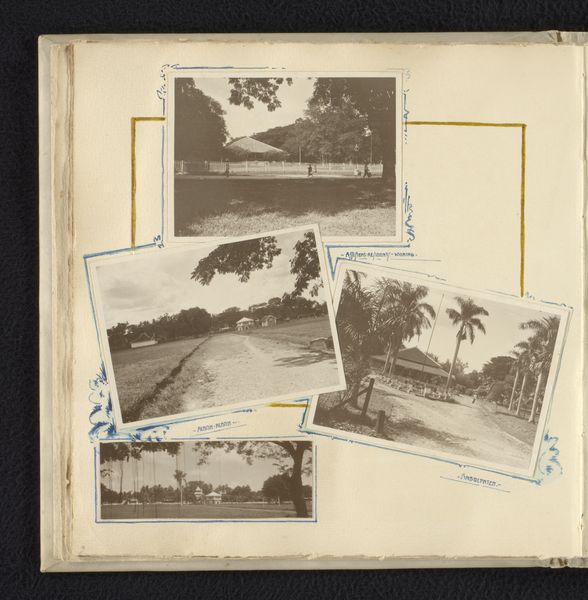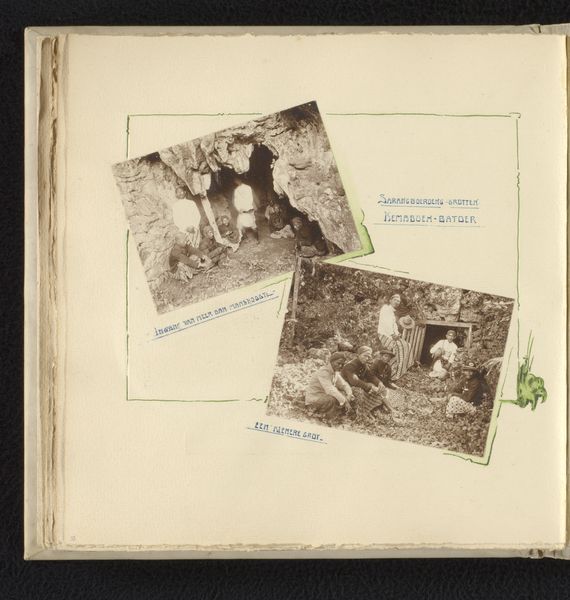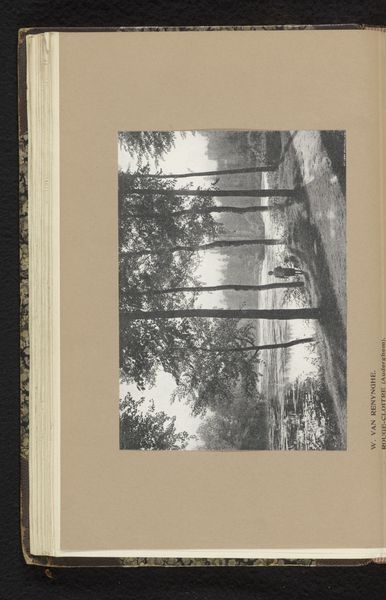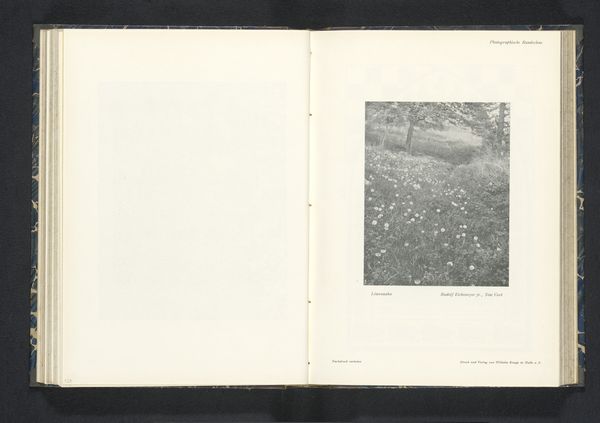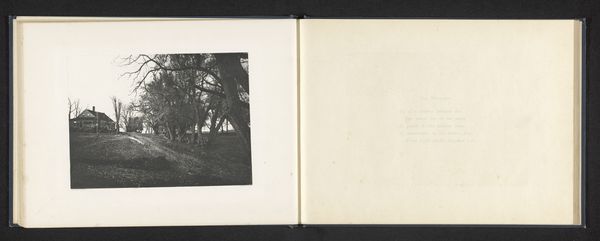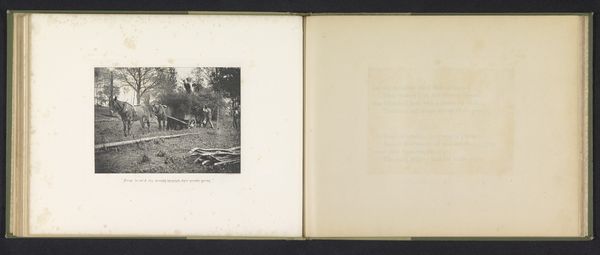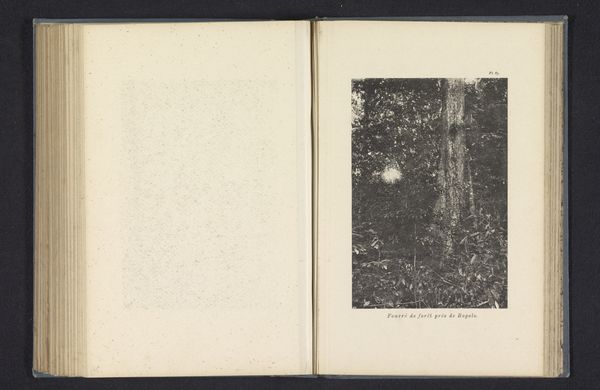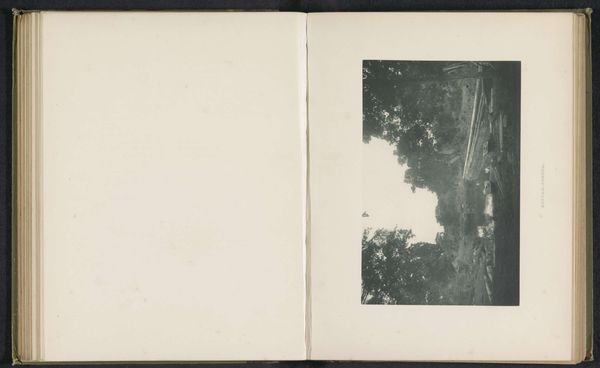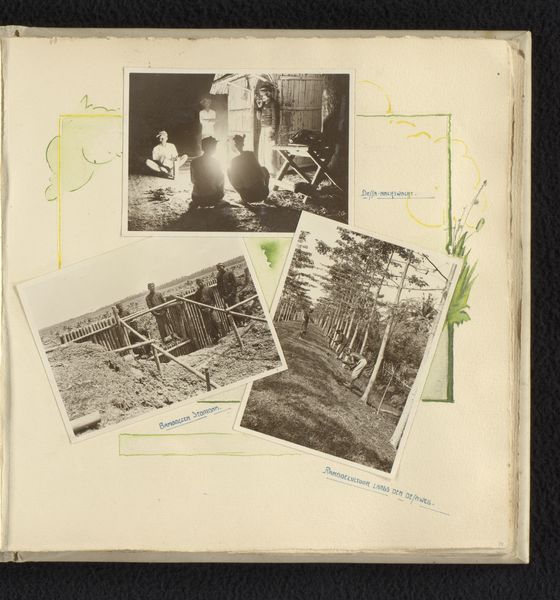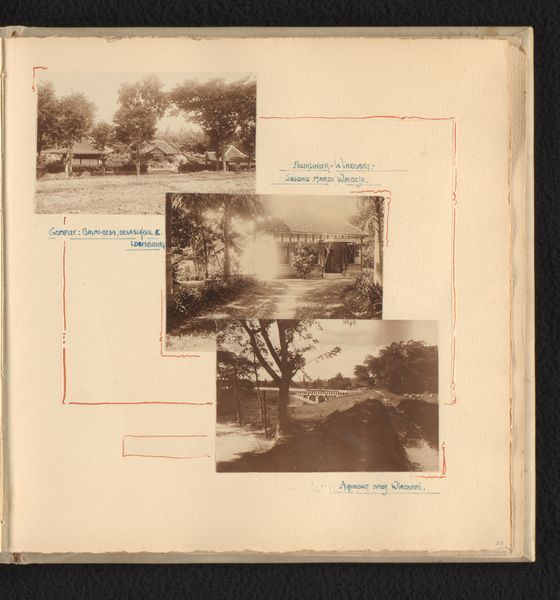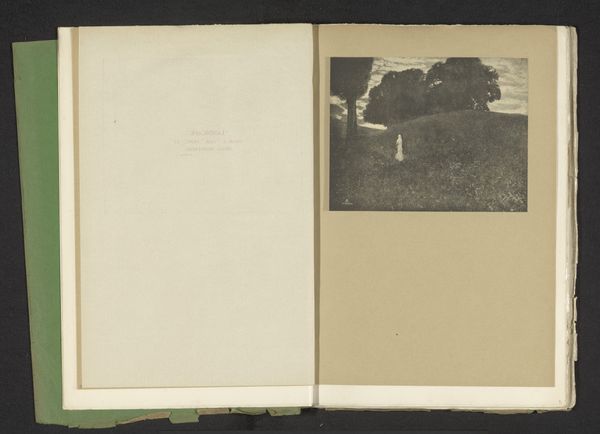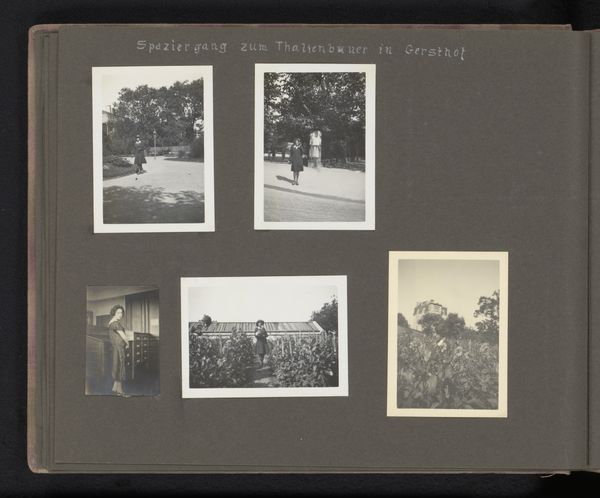
photography, albumen-print
#
aged paper
#
paper non-digital material
#
paperlike
#
sketch book
#
landscape
#
personal journal design
#
photography
#
personal sketchbook
#
publication mockup
#
letter paper
#
paper medium
#
albumen-print
#
publication design
Dimensions: height 240 mm, width 240 mm
Copyright: Rijks Museum: Open Domain
Curator: Here we have a fascinating glimpse into the past with this page from an album entitled "Landschappen in Jati Pohon," created sometime between 1910 and 1928. It appears to feature albumen prints of landscapes. Editor: The first thing that strikes me is the fragility and intimacy of it; it has the quiet melancholy of a half-forgotten memory. Curator: It is part of a personal sketchbook or journal. The presentation provides unique insight into turn-of-the-century Indonesia. The album likely documents landscapes within the Jati Pohon region. But why were these specific locations and views preserved through the act of photography? What socio-political dynamics were at play during its creation? Editor: The two images are really evocative; there’s an interesting tension between the cultivated and the wild. Look at the upper image - gnarled trees against the light and sky – that's wild. Whereas the other landscape feels almost... domesticated. Curator: Perhaps. But think about who had the power and resources to engage in photographic documentation during this era, particularly in a colonial context. Whose narrative is prioritized and amplified when we see images of ‘nature’ presented in this way? Editor: You're right; those perspectives shape everything, influencing the cultural memory embedded in these seemingly straightforward landscapes. Yet, those repeated tree trunks... columns in nature. This almost primordial sensation really dominates my attention. I wonder if the artist was aware of how prevalent trees and the axis mundi theme is throughout various world religions. Curator: I wonder about that intention, too. I am inclined to focus on how the construction of landscape imagery often reinforces colonial power structures. These landscapes need to be analyzed alongside the historical context of Dutch colonialism in Indonesia. We have to understand the conditions in which they were produced. Editor: I concede, you are completely right; power infuses all of this, but in all truth, this offers a glimpse of our interconnected cultural stories. This page echoes our past but still manages to connect to current-day concerns. Curator: A fruitful, albeit challenging relationship indeed. It's pieces like this that make us question both ourselves and art’s function within society.
Comments
No comments
Be the first to comment and join the conversation on the ultimate creative platform.
